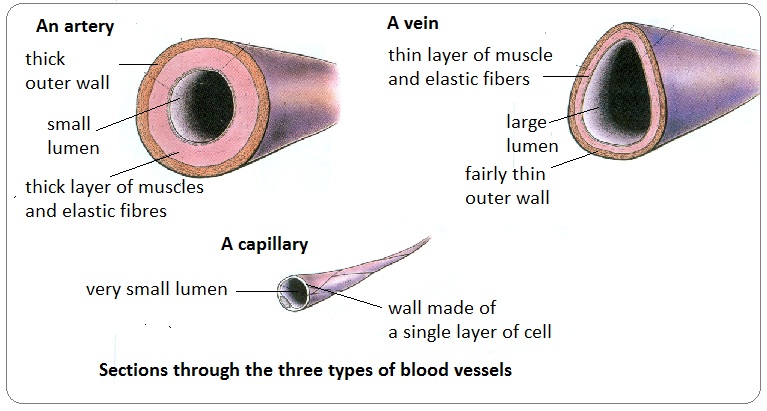What is the muscle that separates the chest cavity from the abdomen and controls breathing?
Diaphragm
Put in order: Trachea → ______ → Bronchioles → Alveoli
Bronchi
What gas do we breathe in?
Oxygen
What is the liquid part of blood called?
Plasma
What respiratory condition causes narrowed airways and wheezing?
Asthma
Which vessel contains valves and transports blood
back to the heart?

Veins
Identify one waste product that is more effectively removed from muscle cells as a result of increased pulse rate.
- Wastes/carbon
dioxide would be
removed more
quickly.
What gas do we breathe out?
Carbon dioxide
Which blood cells carry oxygen?
Red blood cells
What lung disease is caused by smoking and destroys alveoli?
Emphysema
What tiny air sacs in the lungs are the site of gas exchange?
Alveoli
Where does oxygenated blood go immediately after the lungs?
Left atrium
What is the main function of the circulatory system?
Transport materials throughout the body
What protein in red blood cells binds to oxygen?
Hemoglobin
What condition happens when not enough red blood cells or hemoglobin is present?
Anemia
What blood vessels carry blood away from the heart?
Arteries
The human heart is separated into left and right
sides. This type of structure provides for the
separation of oxygenated blood from
deoxygenated blood
In humans, most gas exchange occurs between the
capillaries and alveoli
The flow of blood to and from the lungs is referred
to as
Pulmonary Circulation
A disorder in which there is uncontrolled production
of nonfunctional white blood cells in the bone
marrow is known as
Leukemia
Which statement most accurately describes the human
heart?
A) It has two atria and one ventricle, and it pumps
blood directly into veins.
B) It has one atrium and one ventricle, and it is
composed of cardiac muscle.
C) It has one atrium and two ventricles, and it is
composed of visceral muscle.
D) It has two atria and two ventricles, and it
pumps blood directly into arteries.
D) It has two atria and two ventricles, and it
pumps blood directly into arteries.
Trace the path of blood starting at the left ventricle (name 3 stops).
Aorta → Body → Vena Cava → Right Atrium
What process moves oxygen from the alveoli into the blood?
Draw a model!
Diffusion of gases
1,832 × 1,143
Which statement best describes the blood pumped
from the structure labeled Right Ventricle?
A) It is deoxygenated and will be transported to
the lungs.
B) It is oxygenated and will be transported to the
brain.
C) It is deoxygenated and will be transported to the
skin.
D) It is oxygenated and

A) It is deoxygenated and will be transported to
the lungs.
In humans, what happens when the breathing rate
increases?
Additional oxygen will diffuse into the blood
as carbon dioxide diffuses out of the blood in
the lungs.